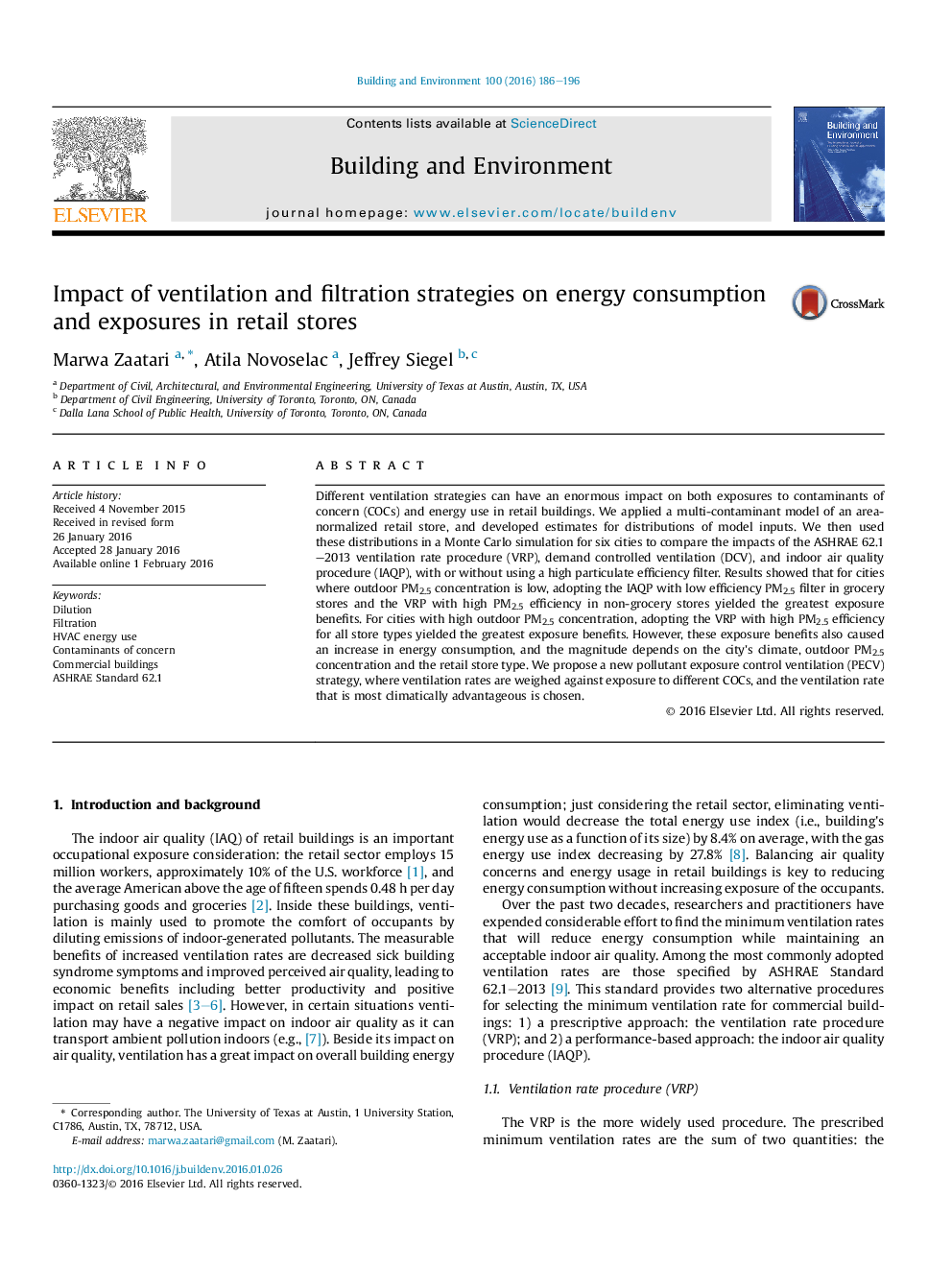| کد مقاله | کد نشریه | سال انتشار | مقاله انگلیسی | نسخه تمام متن |
|---|---|---|---|---|
| 6699434 | 502521 | 2016 | 11 صفحه PDF | دانلود رایگان |
عنوان انگلیسی مقاله ISI
Impact of ventilation and filtration strategies on energy consumption and exposures in retail stores
ترجمه فارسی عنوان
تاثیر استراتژی تهویه و فیلتراسیون در مصرف انرژی و مواجهه در فروشگاه های خرده فروشی
دانلود مقاله + سفارش ترجمه
دانلود مقاله ISI انگلیسی
رایگان برای ایرانیان
موضوعات مرتبط
مهندسی و علوم پایه
مهندسی انرژی
انرژی های تجدید پذیر، توسعه پایدار و محیط زیست
چکیده انگلیسی
Different ventilation strategies can have an enormous impact on both exposures to contaminants of concern (COCs) and energy use in retail buildings. We applied a multi-contaminant model of an area-normalized retail store, and developed estimates for distributions of model inputs. We then used these distributions in a Monte Carlo simulation for six cities to compare the impacts of the ASHRAE 62.1-2013 ventilation rate procedure (VRP), demand controlled ventilation (DCV), and indoor air quality procedure (IAQP), with or without using a high particulate efficiency filter. Results showed that for cities where outdoor PM2.5 concentration is low, adopting the IAQP with low efficiency PM2.5 filter in grocery stores and the VRP with high PM2.5 efficiency in non-grocery stores yielded the greatest exposure benefits. For cities with high outdoor PM2.5 concentration, adopting the VRP with high PM2.5 efficiency for all store types yielded the greatest exposure benefits. However, these exposure benefits also caused an increase in energy consumption, and the magnitude depends on the city's climate, outdoor PM2.5 concentration and the retail store type. We propose a new pollutant exposure control ventilation (PECV) strategy, where ventilation rates are weighed against exposure to different COCs, and the ventilation rate that is most climatically advantageous is chosen.
ناشر
Database: Elsevier - ScienceDirect (ساینس دایرکت)
Journal: Building and Environment - Volume 100, 1 May 2016, Pages 186-196
Journal: Building and Environment - Volume 100, 1 May 2016, Pages 186-196
نویسندگان
Marwa Zaatari, Atila Novoselac, Jeffrey Siegel,
